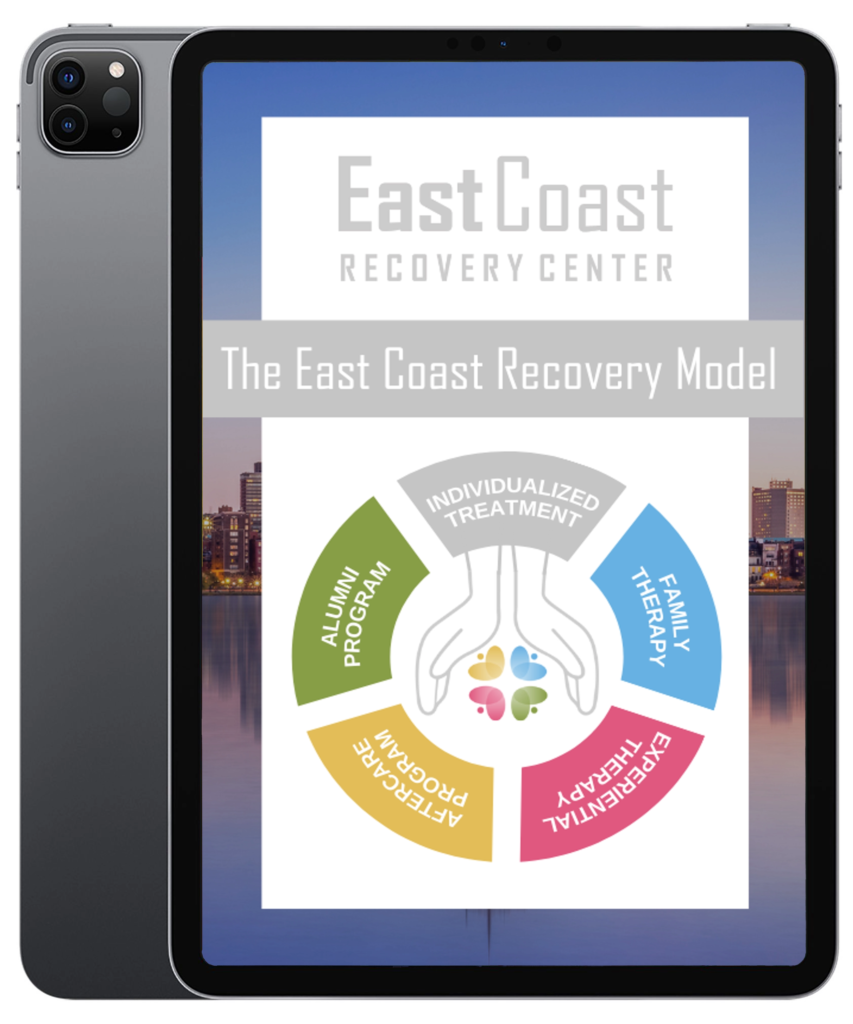Within the last couple of decades, we’ve seen the rise of the drug fentanyl grab media attention due to its increase in popularity as both a powerful painkiller prescribed by doctors as well as a widely-distributed intoxicant street drug. To better understand what makes this particular drug so dangerous, it’s important to learn about what the drug is and how it affects its users.
Ready to overcome effects of Fentanyl?!
If you or a loved one are ready for rehabilitation from Fentanyl & other drugs — Call today or “contact” us.
East Coast Recovery Center is ready to help!
The Boston area offers a great quality of life in addition to healthiness. According to Deutsche Bank, Boston ranks as the eighth-best city in the world in terms of quality of life. Boston is the highest-ranking U.S. city on this list. Publications also frequently rank Boston as the best place to live in the Northeast due to its healthy economy, local economy, family activities such as the New England Aquarium, and its high per capita art funding.
Exercise options here include walking, biking, running, and more, but Boston was also named one of the fittest cities in the country by the American Fitness Index, citing its ‘more public parks, playgrounds, and farmers markets per capita than the target goal for a healthy city.’ As well as having convenient access to some of the country’s greatest teaching hospitals, Boston is a healthy, happy, and intelligent city.
Across the country, the opioid epidemic is growing due to a number of factors, especially fentanyl use. Fortunately, there are resources available for effective substance abuse treatment. With East Coast Recovery, we offer a wide range of services and programs to assist our clients in living a healthy, happy, and sober life.
Please don’t hesitate to contact the experts at East Coast Recovery if you need treatment for fentanyl addiction. We can assist you in overcoming your addiction and getting well. We are here to assist you throughout your recovery process.
We provide a variety of programs, therapies, and treatments that include the following:

Download Our FREE East Coast Recovery Model eBook

Individuals in day treatment attend individual and group sessions full-time Monday through Friday and return to a sober living environment in the evenings. This program is our highest level of care. Combining evidence-based therapy, peer support, and a caring community, this program can be an ideal fit for individuals who have completed inpatient treatment and require additional recovery support. This program includes:
Individual and group therapy sessions
Educational sessions regarding addiction
Behavioral therapies such as CBT and DBT
Family counseling
12-step meetings
Holistic exercises such as guided meditation, yoga, and breathwork
Peer support groups
Individuals who have completed our day treatment or comparable inpatient treatment programs and are looking to continue their recovery can participate in this program. Partial day treatment runs Monday through Friday, which allows individuals to return to work, school, or family life while still recovering. Even though this program offers a less structured, more independent treatment approach, individuals will still receive skills, training, and therapy that enable them to reintegrate into daily life outside of treatment. This program includes the following:
Individual and group counseling
Life skills training
Education sessions regarding addiction
Holistic exercises such as yoga, breathwork, and guided meditation
Peer support groups
12-step groups

There’s no denying that finishing a rehabilitation program is an important triumph but addiction recovery is a lifelong process. After treatment, a person in recovery will return to normal life, which includes work, family, friends, and hobbies. All of these areas and occasions may tempt a person in recovery. The majority of relapses, according to research, occur within the first six months after treatment. By identifying your triggers, you can better protect yourself from future problems. Fortunately, post-treatment services are available so that you or your loved one is never without a support network. Typical services and programs that occur post-rehab include:
Addiction treatment aftercare is any service or treatment that aims to help individuals who have completed an addiction treatment program remain clean and sober. Aftercare is critical for those in recovery because most people who are newly sober struggle early on. Aftercare programs primarily aim to keep patients rooted in their recovery and maintain the life and coping skills they have learned while in rehab in order to transition back into normal, daily living. Aftercare programs provide continuing treatment with no specific end date, including alumni groups at rehab facilities as well as therapy and 12-step meetings. Relapse rates are significantly lowered by continuing treatment and a successful aftercare strategy.
Substance abuse recovery residences, also referred to as sober living homes, are a type of residential facility where individuals can live while recovering from substance abuse. They’re usually independent but may be connected to rehab organizations or government agencies in some cases. According to numerous studies, sober living homes have been shown to enhance the probability that recovering addicts will stay sober. These homes are designed to be temporary residences but longer-term stays are available at some homes.
A sober living home can be organized in a few different ways, with some having a leader who establishes and enforces the policies, and others being organized more democratically and collectively. Both models are effective, and the one that is most appropriate for an individual is dependent on their needs. Despite the fact that every sober living home has its own set of rules, most follow certain norms, such as maintaining sobriety, abiding by certain curfews, and contributing to certain expenses. New residents at most sober living homes are required to abide by stricter guidelines at first, which are gradually lessened over time.
Every type of addiction has its own distinct treatment approach. It is critical to recognize that your recovery from addiction will be distinct from any other individual’s treatment and recovery. Several basic treatment options are available based on your unique requirements. These treatment options include 30, 60, and 90-day programs. The most crucial factor to consider when selecting a program is whether or not it will provide you with the best chance for long-term recovery. In order to become sober and establish a program for continued recovery, most addicts require at least three months of treatment. Research indicates that the greatest outcomes are produced by longer treatment durations. At first, longer treatment programs may seem daunting, but they usually produce the best outcomes.
The cost of addiction treatment varies between facilities. Some treatment options are free while others cost thousands of dollars a day. The cost of getting clean depends on the type of care provided. In some cases, the nature of addiction necessitates different treatment types. Therapy costs are impacted by a multitude of variables, including medical care and amenities. Insurance is one of the most common ways to pay for rehabilitation where the cost of treatment is determined by the insurance company and the health provider.
The Affordable Care Act (ACA) requires all health insurance policies to at least partially cover substance abuse and addiction treatment. Private health insurance, Medicaid, Medicare, state-financed health care, and military insurance are all required to meet this need. Although it may be costly, there are ways to pay for addiction treatment. Depending on the facility, you may be able to negotiate a payment plan, financing, or a sliding-scale fee.
Starting your sobriety journey can seem frightening or difficult. Having a better grasp of how the admissions procedure works can help you feel comforted and confident in your decision to get sober.
Rehab centers have personnel standing by and ready to take your call. When you call an addiction treatment facility, an admissions representative will take your call and help you through the rehab process. During this confidential phone call, you will provide your name, birthdate, address, and occupation. You will also provide information about your substance abuse history, including your primary substance of abuse, how long you have been addicted, and how you began abusing substances. You may also be asked about your mental health history, whether you have any co-occurring disorders, and whether you are experiencing any financial or family issues.
You will go through a comprehensive intake procedure once you accept treatment and reach the facility. A number of lengthy medical and mental health assessments may be requested by your care team to establish a personalized treatment program and help you stay sober. Rehabilitation may be difficult and confusing, but having an idea of what to anticipate can significantly help. It should be a simple and seamless procedure. Delays are to be avoided at all costs. The more time that passes between a person’s first phone call, screening, and admission to treatment, the less likely he or she will follow through with the treatment.
Fentanyl is a completely synthetic opioid compound that was first synthesized in 1960 by the Belgian chemist Paul Janssen of Janssen Pharmaceuticals. From its inception, it was marketed for the treatment of moderate to severe levels of pain. It is one of only a few painkillers that are approved for the long-term treatment of pain and is primarily prescribed to people with chronic pain and tolerance to other opioids.
Fentanyl is incredibly potent and a stronger opioid than either heroin or morphine. In fact, the drug is believed to be 80 to 100 times stronger than morphine. Because of its potency, over time, it has been shifted from an effective way to treat high levels of chronic pain to a commonly misused intoxicant street drug.
While its popularity as a cheap and powerful street drug continues to gain traction, it is still prescribed and used as an effective medical tool under the brand names Sublimaze®, Actiq®, and Duragesic®. When used in a medical setting, fentanyl is most commonly administered via pill form, injection, or medicated adhesive patch.
As a street drug, fentanyl is sold and consumed in any number of different forms. It can be sold in powder form or pressed into pills and made to look like counterfeit versions of other prescription opioids. The drug is also dissolved and dropped on paper tabs similar to LSD, or mixed with or sold as counterfeit heroin.
The biggest danger of overdose with fentanyl lies with the drug being sold as counterfeit versions of known opiates. Fentanyl is very commonly added to heroin to increase its potency, or to be disguised as highly potent heroin. Oftentimes, consumers of these street-level opiates believe they’re consuming one drug but in reality, it is actually the much more potent, and cheaper, fentanyl. This commonly leads to overdose and death.
Some common street names for fentanyl (or fentanyl-laced heroin) may include:
Apache
China Girl
China Town
China White
Dance Fever
Goodfellas
Great Bear
He-Man
Poison
Tango & Cash
Much of the fentanyl that is produced for legitimate medical use is manufactured in China and imported into the United States. A large portion of this fentanyl is also diverted for illegal street use and smuggled across borders, eventually reaching people in the United States via mail or the efforts of drug cartels. The Drug Enforcement Administration reports that there is also a large amount of clandestinely-produced fentanyl that is primarily manufactured in Mexico and brought into the United States.
Due to its incredibly high potency and relative ease of manufacturing compared to other drugs, fentanyl has become enormously profitable to make and sell. Because of its potency, it is easy to produce in a number of different forms in order to disguise it as different drugs.
Doctors prescribe pharmaceutical fentanyl to patients suffering from severe pain following surgery, for advanced-stage cancer, and for when nothing else will relieve their suffering. It is available in the form of lozenges or tablets that can be taken as needed. Please note that fentanyl must be taken as prescribed; it has a high risk of overdose and death if consumed in any other manner.
In Massachusetts, fentanyl has become a major problem and the cause of a large number of opioid overdose deaths. The standard toxicology screen ordered by the Office of the Chief Medical Examiner of Massachusetts when an overdose is encountered includes a test for the presence of fentanyl. Among the 1,873 opioid-related overdose deaths in 2019, 94% of them had a positive screen result for fentanyl. Since 2014, the rate of heroin, or likely heroin, present in opioid-related overdose deaths has been decreasing while the presence of fentanyl is still trending upward.
Fentanyl may cause the following short-term effects:
Constant drowsiness and “nodding off”
Confusion and disorientation
Constipation
Nausea and vomiting
Intense flushing, sweating, and hot flashes
Slowed or labored breathing
Irregular heartbeat
Long Term Effects
Long-term abuse of fentanyl can cause the following effects:
Lung damage
Irreversible brain damage
High risk of contracting HIV or Hepatitis
Poor immunity
Organ damage
Heart disease
Liver failure
Hypotension
Overdose

A very small amount of fentanyl can kill a person. This means that an overdose of fentanyl is a common occurrence for users of the drug. Knowing the signs and symptoms of fentanyl addiction is very important and can save your life or that of a loved one.
The signs of fentanyl addiction are similar to the signs of addiction to any opioid. This includes the compulsive use of fentanyl or other opioids, intense cravings for the drug, showing impaired judgment regarding the drug, or continuing to use fentanyl despite obvious negative consequences or harm. When someone is under the influence of fentanyl it is likely to cause some identifiable signs such as:
Tolerance of the drug beginning to form
Using to avoid the symptoms of withdrawal
Preoccupation with fentanyl
Unsuccessful attempts to quit using
Avoiding social activities in order to use drugs
Continuing to use fentanyl despite obvious negative consequences
Because of its inherently higher potency, many people who suffer from opioid addiction may seek out fentanyl as a way to “beat” their opioid tolerance and achieve the intoxication that they desire. This is a very dangerous phenomenon and too often leads to overdose and death.
It’s crucial to be able to identify the signs of fentanyl addiction because the misuse of fentanyl is incredibly dangerous. Treatment options should be considered immediately in order to avoid the life-threatening ramifications of fentanyl addiction.
One big thing to note about fentanyl addiction is that often the user may have initially suffered from addiction to another opioid, prescription or otherwise. The nature of opioid addiction is such that the person begins to build a tolerance for the drug over time. This means that an opioid user will have to use the drug more frequently, and in higher amounts, in order to reach the desired level of intoxication.
Fentanyl is an incredibly potent opioid drug. Because of its potency, many people switch to fentanyl from weaker opioids in order to chase the desired intoxicant effects. Fentanyl affects the pleasure and reward systems in the brain in such a way that, after extended use, the brain becomes dependent on the drug in order to feel happiness. This makes for the basis of physical addiction.
Fentanyl is an extremely powerful opioid, so it is very addictive. Even a short experience with fentanyl can lead to addiction. Recognizing the following signs of fentanyl use and addiction can help you determine if professional help is necessary.
Fentanyl use is indicated by noticeable changes in behavior, even if the individual has only been abusing the drug for a short time. This is because of the drug’s potency. Some behavioral changes resulting from fentanyl use include severe lethargy, mood swings, withdrawing from family and friends, and engaging in risky or dangerous activities.
Opioid use can be identified by physical signs, but these only occur when a person takes more of the drug than prescribed. A person who has taken fentanyl or opioids may appear to suddenly fall asleep during a conversation or doze off at an inappropriate time. Drowsiness or “nodding off” is one of the most typical signs. Other physical signs include appetite loss, pale skin, and mouth sores.
Addiction to fentanyl can negatively impact every aspect of a person’s life. Unfortunately, many fentanyl addicts will continue to use the drug despite these negative consequences. Losing friends or family, losing their jobs, losing their jobs, or getting into legal trouble are just some of the life consequences that may occur as a result of fentanyl use and addiction.
Someone who habitually takes fentanyl becomes physiologically dependent on the drug. To feel normal and function properly, this individual must continue using the drug. The symptoms of opioid withdrawal vary in intensity and are discussed in detail below.
After an extended period of opioid use, the body adjusts to the constant presence of the drug in a phenomenon known as physical dependence. When that person stops using the drug abruptly, there are negative physical and psychological consequences known as withdrawal.
The longer someone has used opioids, how it was used, and the amount that was used each time, are all factors that play into the severity of withdrawal symptoms when the person stops using.
As we know, fentanyl is an opioid drug that can suppress some of the functions of the central nervous system such as breathing rate, heart rate, and body temperature regulation. Fentanyl works by binding to opioid receptors in the brain, causing an increase in the chemicals responsible for pleasure. After extended opioid use, the brain begins to adjust to this newfound source of pleasure chemicals and stops producing them on its own. When heroin is removed from the equation, the brain and body are left to readjust, leading to the negative symptoms of withdrawal.
The severity and duration of withdrawal issues will vary from person to person but there are some symptoms that are universally experienced. These symptoms can range from mild to severe, and while they can be extremely uncomfortable, they are not generally seen as life-threatening. Some of these symptoms may include:
Abdominal cramps, nausea, diarrhea, and vomiting
Restlessness, agitation, and irritability
Tremors and goosebumps
Fatigue
Hypertension and rapid heart rate
Muscle spasms and impaired breathing
Anxiety, depression, and difficulty feeling positive feelings or pleasure
Extreme drug cravings
Like many opioid addictions, success can often be achieved by pairing behavioral therapies with medication-assisted treatments. Medications such as buprenorphine, naltrexone, and methadone have all been shown to have success in treating opioid use disorders when used in combination with cognitive and dialectical behavioral therapies.
Buprenorphine and methadone act as opioid receptor antagonists, thereby reducing cravings and withdrawal symptoms. Naltrexone, on the other hand, blocks opioid receptors and prevents fentanyl from functioning. Behavioral therapies can help people modify their drug-taking behaviors and attitudes, as well as bolster their medical treatment by increasing healthy lifestyle skills.
Many people have extreme difficulty when trying to quit using opioids on their own. It is highly recommended that the user seek treatment in a licensed addiction treatment facility. East Coast Recovery in Massachusetts offers Partial Day treatments that have shown success in helping people overcome opioid addiction.
A person in recovery seeking inspiration to continue on their sobriety journey may seek out fentanyl addiction support groups, as they are able to connect with others facing similar issues in their lives. You can find addiction recovery groups around the Boston area on the Narcotics Anonymous (NA) website.
At East Coast Recovery, our mission is to help those suffering from drug and alcohol addiction achieve success in recovery and life. Our campus is located 20 minutes outside of Boston in beautiful Cohasset, Massachusetts. This is where your healing journey will begin.
We realize that every person’s path is different, so our approach to treatment for substance use issues must be different as well. Call Today at (617) 390-8349 to get started on your journey.










